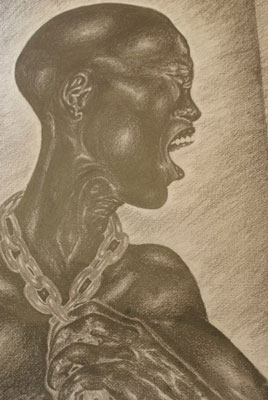All Nonfiction
- Bullying
- Books
- Academic
- Author Interviews
- Celebrity interviews
- College Articles
- College Essays
- Educator of the Year
- Heroes
- Interviews
- Memoir
- Personal Experience
- Sports
- Travel & Culture
All Opinions
- Bullying
- Current Events / Politics
- Discrimination
- Drugs / Alcohol / Smoking
- Entertainment / Celebrities
- Environment
- Love / Relationships
- Movies / Music / TV
- Pop Culture / Trends
- School / College
- Social Issues / Civics
- Spirituality / Religion
- Sports / Hobbies
All Hot Topics
- Bullying
- Community Service
- Environment
- Health
- Letters to the Editor
- Pride & Prejudice
- What Matters
- Back
Summer Guide
- Program Links
- Program Reviews
- Back
College Guide
- College Links
- College Reviews
- College Essays
- College Articles
- Back
Labels on Artwork
Black art and literature is a label, not a definition. Art and literature created by black artists and writers is one that puts perspective and comments on the historical relationship of blacks and whites, rich and poor, race and capital. A label like “black art” binds that artwork to political and social aspects. However, the ability it has to highlight the inter-community dynamics between blacks and whites throughout history is vital, as it makes the pain visible. It makes the victim exposed, and the offender on trial.
The majority of museums in the United States are viewed by whites, and so it is crucial for various types of work to be displayed, especially those that represent artists with various ethnicities, nationalities, backgrounds, races, genders, and other identifications. These identifications however, must not lie in the way. They cannot solely place the artist in a box and call him or her a “black poet” or a “Hispanic painter”. They should be known for the type of work they do, the quality in which they perform, and the messages they deliver. Countee Cullen aspired to be a "poet " rather than a "black poet.” This aspiration does not make him any less of a black writer. He still is writing in his skin, in his experience, in his own thoughts. Saying that this new label takes away from his black artist credibility would be similar to stating that someone calling themselves a “homosexual woman” takes away from the fact that they are a woman. That argument is invalid.
It is hard to take this step back, and evaluate if this label of “black” is pertinent. It should be acknowledged that they do have a flavor, a certain splash of color they add into the mix of artwork out there. They have an experience different than any other, and an inhumane and heart-breaking one at that. Their experiences and their skin color certainly shape the art they create. Black art is not a monolith; it does not fit into a category. It is powerful, distinctive, and ever-prolific.

Similar Articles
JOIN THE DISCUSSION
This article has 0 comments.
